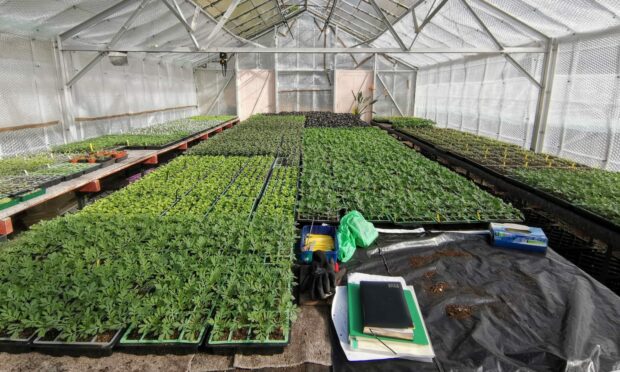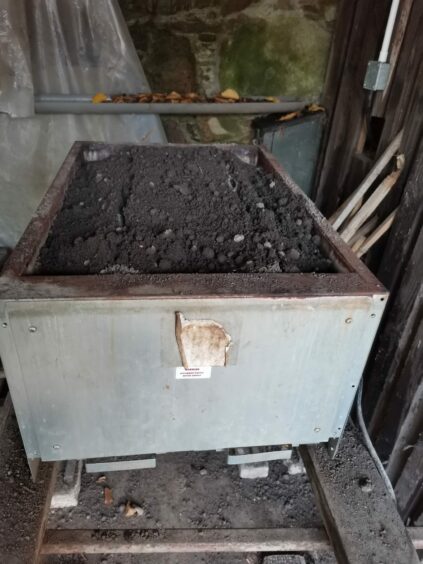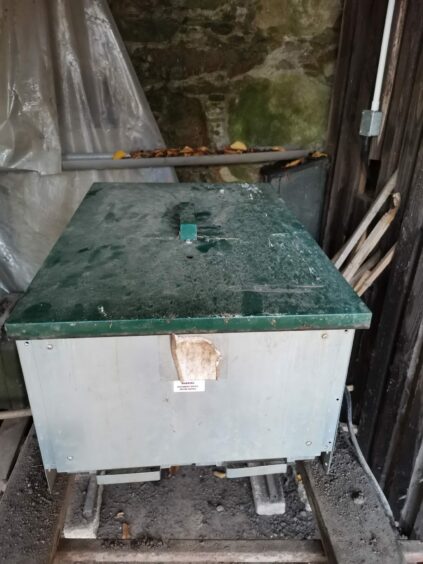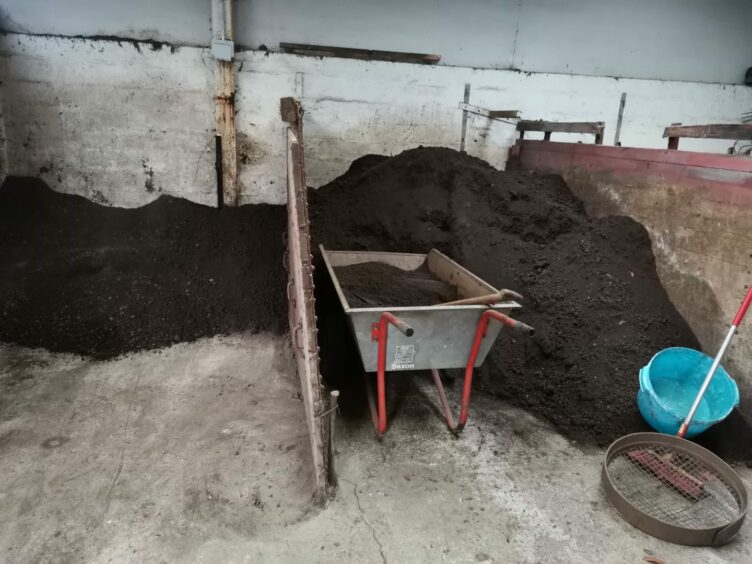Even just looking at the picture and I can smell it.
The olfactory memory kicks in and I’m there filling the steriliser, setting the timer switch and putting the thermometer in. The unique smell of cooking compost/soil.
The winter wind blows and my face is numb with the cold. Still, only 80 minutes until the cook is done.
Steaming heat
Come back after tea break and lift the heavy lid. A blast of steaming heat and the unforgettable smell hits body and soul.
My face is soothed temporarily by the beautiful warmth. Like clothes put on straight from the tumble drier.
I’m not just looking at a picture of it now though. It’s that time of year again already.
Sterilising soil
We sterilise our compost over the winter period. Accumulated compost from previous years sit in a bay outside in the work yard.
All the garden waste bar unwanted items go here. Unwanted things will include rubble, litter, any pruning’s infected with pest or disease, or pernicious weeds.
We move the compost from outside and fill up a large bay indoors in the work shed. Unsterilised compost used in bedding soil mixes can be full of weed seeds.
Consequently you have detrimental competition to your newly germinated trays of seeds.
Additionally, there is a greater threat of attracting pest and disease like sciarid fly and damping off disease.
That’s not to mention the time and effort required to weed the trays around the germinating seeds. It can also contain unseen bacteria or fungi that may harbour disease.
So while it may seem like a farce, it’s a short term investment to avoid long term pain. At home let’s be honest you’re likely to buy a bag of compost from the garden centre.
Large gardens
This will mostly be clean stuff and you needn’t bother sterilising it. As the team and I work in large gardens that make their own compost, it is needed for us.
If you do make your own compost at home though and make your seed mixes, do you sterilise? It’s entirely up to you!
You may be happy to chance it and just make your mixes sans the sterilising. If the weed seeds pop up then you’ll probably have the time to weed them.
Imagine though you’ve got thousands of trays to do. Changes it a bit, doesn’t it?
Do it at home
While there’s certainly less of a need at home, if you fancy it then it is very much possible to sterilise at home.
You can simply pop your soil into an oven-proof dish/tray then cover with foil and stick the oven on low for about 30 mins (130 degrees Celsius) make sure the soil has some moisture in it or it won’t steam well.
The right consistency is when you can grab a hand full and it holds it shape but can easily be broken apart still. Soil can be used as soon as it has cooled down.
Stocking up
We manage about three cooked batches of soil per day. One batch is a wheelbarrow full (85L).
Every morning we load up the steriliser with compost that has been riddled. By riddling we remove any detritus or odd bits of compost not properly broken down.
If it’s a tad dry we give it a splash with a watering can to moisten it. It’s the steam that sterilises after all. No moisture, no sterilising. The timer is set and we leave it to cook.
Once it’s done we lift the lid and pull the slats below the steriliser to let it drop into the barrow waiting below.
The barrow gets emptied into a separate bay in the shed. Eventually over the course of winter; barrowload by barrowload, we fill a bay with clean soil.
Essentially, in the beginning one bay is full of unsterilised compost while the one next door is empty.
By the end, the empty one is full of sterilised compost while the previously full one is empty.
Draw from that whatever clever life parallels you will. This bay full of clean soil has had weed seed and any nasties eradicated during the cook and forms a part of our soil mixes for the summer bedding.
Life cycle
I love the smell. It is literally the smell of the past, present and future. Past: compost made from past plants. Present: compost cooking! Future: summer bedding to be.
At home, if you’re only sowing a few trays then it may not be needed. With the scale that we sow however (20,000+ annuals every year between Feb and April) we need to minimise damage. It’s a part of the annual cycle of the garden.
Part of the ebb and flow of a wonderful, historic horticultural site.
Take care and happy gardening.





Conversation